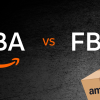What Makes a Website “Work” in Practice: 11 Essentials

Your website is more than a brochure—it’s your shopfront, brand centre, helpdesk and comms hub all rolled into one. It should be attractive, secure, accessible, and most of all easy for people to use.
Poor UX is costly: studies cited (e.g., Baymard Institute) indicate about 88% of visitors won’t return after a bad experience, 32% would ditch even a favourite brand after a single poor visit, and every $1 put into UX can yield roughly $100 in value. Performance on mobile matters too, and Google’s mobile-first indexing raises the bar.
Also, a good site is never “done.” Treat it like ongoing housekeeping measure, learn, and iterate.
1) Trust & Credibility Signals
Why it matters: Online shoppers can’t touch or try your products; they depend on digital proof.
Do this: Put contact details upfront, show reviews/ratings, highlight press, awards, certifications, and share case studies.
Example: Chocolate.org uses customer testimonials to reassure new buyers.
2) Technical Security
Why it matters: If payment feels risky, people won’t buy. Baymard’s more recent research (2025) links 19% of cart abandonment to distrust in payment security.
Do this: Secure hosting, routine vulnerability scans, up-to-date software, strong passwords or MFA, valid SSL/TLS, and PCI DSS–compliant payments.
Example: Luxe Water Walls publishes a clear security statement to build confidence.
3) Speed & Mobile Experience
Why it matters: Fast pages convert better. Portent found ~3× higher conversion at 1s vs 5s load time (and ~5× vs 10s). A large share of people buy on phones weekly, and Google evaluates your mobile version first.
Do this: Reliable hosting, image optimisation, fix broken links and checkout errors, and use responsive layouts.
Example: Cowboy pares back navigation on mobile and keeps product pages minimal and swipe-friendly.
4) Customer-Centred UX
Why it matters: Clear journeys mean higher spend and repeat visits; confusing flows leak revenue.
Do this: Label menus plainly, include effective search, create short paths to product pages and checkout, remove dead ends.
Examples: Belstaff keeps top navigation lean; Clothes Mentor organises dropdowns by popular brands and offers a prominent search icon.
5) Visual Identity & First Impressions
Why it matters: People form views within ~0.05s. A coherent look-and-feel signals professionalism and brand personality.
Do this: Clean layouts with breathing space, strong imagery, and a disciplined colour palette (often ~3 core colours).
Examples: OffLimits embraces playful, creative visuals; Kai Collective leads with striking hero photography that sets the tone.
6) Purpose & Value Proposition
Why it matters: Clarity about who you serve and what’s different about you keeps every page on-message.
Do this: On your About page, state your mission crisply, highlight benefits, and align all copy to that promise.
Example: Hodinkee presents itself as the pre-eminent resource for modern and vintage watch enthusiasts.
7) Content That Pulls Its Weight
Why it matters: Useful, accurate content answers questions, builds authority, and supports rankings so visitors stay longer and convert more.
Do this: Detailed product copy, FAQs, a plan for blogs/guides/evergreen resources, and add video or audio where it helps.
Example: Gnarly Nutrition’s “Gnarly Stories” educates while showcasing products, updated regularly to grow loyalty.
8) Calls to Action That Stand Out
Why it matters: CTAs move visitors from browsing to action add to cart, sign up, learn more.
Do this: Keep labels concise, make buttons unmissable, place them thoughtfully (don’t spam), and use persuasive microcopy (e.g., “Limited-time offer”).
Example: World Wide Stereo pairs hero visuals with bold CTAs that channel traffic to featured content and offers.
9) Search Engine Optimisation (SEO)
Why it matters: Organic traffic compounds over time and brings buyers without ad spend.
Do this: Map pages to relevant keywords, maintain fast/mobile-friendly performance, add structured data (schema), and make sharing easy.
Example: Vermont Woods Studios ranks for precise phrases like “solid wood bookcases handcrafted in Vermont,” backed by specific materials and attributes on landing pages.
10) Accessibility for All
Why it matters: Inclusive sites widen your market and reflect social responsibility often improving usability and SEO for everyone.
Do this: Audit with accessibility tools, choose themes aligned to WCAG, add alt text, ensure sufficient colour contrast, use proper heading hierarchy, and support keyboard navigation.
Example: Revice lists accessibility features and gives a clear contact for related feedback.
11) Personalisation That Helps (Not Creeps)
Why it matters: 71% of consumers expect tailored interactions; many feel frustrated when they’re generic.
Do this: Recommend related items, use quizzes/calculators, show dynamic content based on context, and trigger reminders (e.g., abandoned cart).
Example: Revision Skincare offers a short quiz to match shoppers with the right Intellishade formula.
Practical Checklist (Use This to Review Your Site)
- Can a first-time visitor tell within five seconds what you offer and why it’s different?
- Do pages load fast on 4G and look great on smaller screens?
- Are there no dead ends from category → product → cart → checkout?
- Do you show trust markers (contact info, reviews, press, certifications)?
- Is SSL/TLS active site-wide and payments PCI DSS–compliant?
- Are your CTAs clear, visible, and not overused?
- Do content and keywords match search intent?
- Are accessibility basics (alt text, contrast, headings, keyboard nav) in place?
- Is there at least one meaningful personalisation touch-point?
- Do you measure and iterate monthly (or faster) on UX and performance?
Bottom line: Strong sites blend strategy, tidy design, technical discipline, and content that serves users and they evolve continuously to lift conversions and sales.







